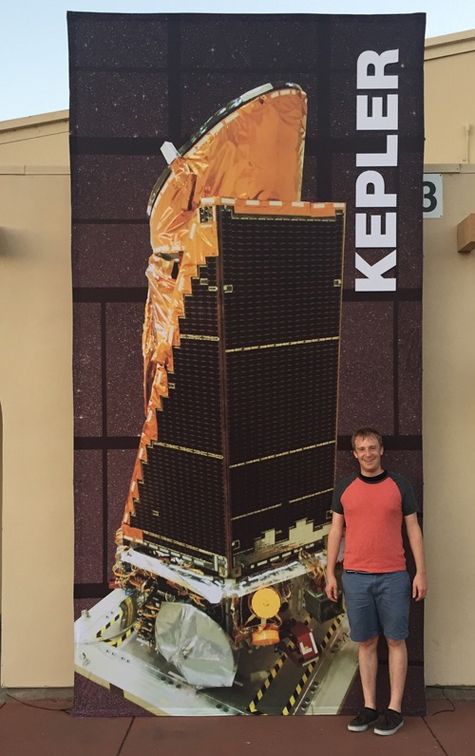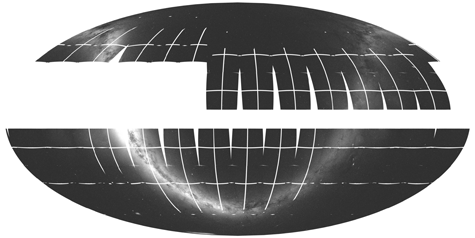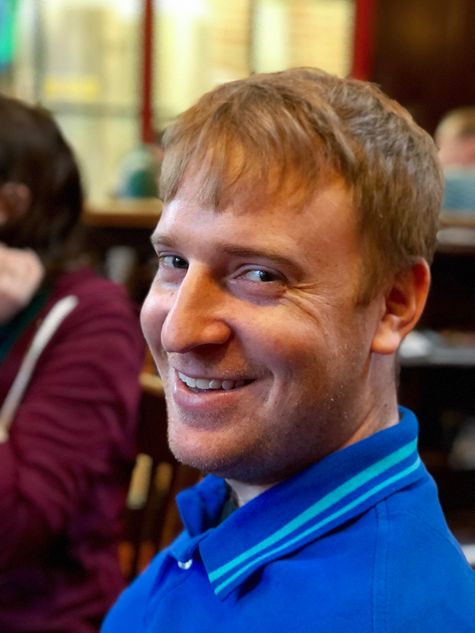Early Career Scientist Spotlight
Dr. Ethan Kruse
Exoplanet Astronomer
Astrophysics Science Division
Did you always know that you wanted to be an astronomer?
I knew I wanted to work in astronomy from very early on, but not necessarily in exoplanets. Starting in middle school, I participated in a competition called Science Olympiad, and I was always particularly drawn to the astronomy events. I was so taken by astronomy that I focused my college applications on universities with known astronomy programs. Once I got to college, I had a fantastic advisor who happened to be part of the Kepler exoplanet mission that launched my freshman year; I fed off his enthusiasm for exoplanets and the Kepler discoveries, eventually deciding to go to graduate school to study them myself.

Credit: Elisa Quintana
What is your research focus?
My primary research is to discover new planets around other stars (exoplanets). In just 25 years, we’ve found over 4000 confirmed exoplanets and another 4000 candidates awaiting confirmation, but there’s still so much we don’t know. We’re finding that many exoplanet systems look nothing like our own Solar System, so my goal is to figure out how common planets of all sizes are and how all these different systems formed and evolve over time. However, I am especially focused on finding new planets like the Earth that could potentially host life.
What is one of your favorite moments in your career so far?
Early in my career, I was building my own pipeline to discover exoplanets by watching a star’s brightness over time and looking for dips when the star gets fainter as a planet passes in front and blocks some of the light. In one particular case though, I found the opposite: something passed in front of a star, and we watched the star get brighter. After some digging, it turned out I had discovered the first ever object in a class we now call self-lensing binaries. In this case, a very compact, dead star called a white dwarf has such strong gravity that it warps light around it like a magnifying glass. So every time the white dwarf passes in front of the normal, Sun-like star it is in a binary star system with, it magnifies the star behind it. This discovery created a new sub-field of astronomy, and we now have several other examples of these self-lensing systems that are being used to help us study how binary systems evolved after one star dies.
What is one space mission that you are particularly excited about, and why?
The Transiting Exoplanet Survey Satellite (TESS). NASA's first exoplanet mission, Kepler, told us that exoplanets are common and laid the foundation for the field. However, it only looked at a small patch of the sky and mostly at Sun-like stars. TESS is able to see a much wider view of the sky at once, and it also rotates around the sky to observe nearly the entire sky. With TESS, we can find planets all over the sky around all types of stars of different ages and in different environments. I’m excited to use TESS to find planets and test our theories about how planet sizes depend on the size of the stars they form around. Despite TESS’s short nominal 2-year primary mission, the telescope is designed to last for decades. It’s already into year 3, and I’m hoping it can keep producing science for many years to come.

Credit: Ethan Kruse
What science question intrigues you the most?
Everything I work on is ultimately driven by the question “are we alone?”. We don’t quite have the technology to directly look for signs of life on every new planet we find, but we can start laying the groundwork. Right now, I’m trying to find planets like Earth and figure out how common they are in our galaxy. Finding the nearest Earth-like planets and knowing how common they are will then motivate and shape the designs of future telescopes to find more of them and to start to study their atmospheres to look for early signs of life. I hope that by the end of my career we have detailed studies of the atmospheres of hundreds of Earth-like planets and maybe even signs of life elsewhere in the galaxy.
What aspect of your work excites you the most?
I’ve found a passion for data visualization and science communication. One of my first data-viz projects showing the orbits of all the multi-planet systems Kepler found compared to our own Solar System went viral, was viewed 900,000 times on YouTube, and was featured as the Astronomy Picture of the Day. I’ve also created the largest and most complete panorama of the sky from TESS by stitching together all of its different sectors of data. I have other ambitious visualization projects in the works for later this year. I like projects like these because they simultaneously give me a break from my usual work, allow me to stretch creative muscles in new ways, as well as reach and inspire orders of magnitude more people than my research papers that only get read by other astronomers.
Credit: Ethan Kruse
What science fact consistently amazes you?
I’m constantly amazed at the scale of objects and events in the universe. Even when you work in the field and deal with the numbers on a daily basis, it’s sometimes hard to really fathom how empty space is and how powerful the events we study are. In particular, I love the “if the moon were only 1 pixel” project that demonstrates how empty our solar system is by setting it all up with the size of the moon as exactly 1 tiny pixel on your screen. Once you have a handle on exactly how empty space is and how far the Earth is from the Sun, you can try to imagine how strong a supernova is (the violent death of a massive star). I especially love the famous xkcd calculation that shows that a nuclear bomb going off right next to you would only hit you with one billionth of the energy of a supernova when viewed from as far away as the Earth is to the Sun.
Biography
Home Town:
Valparaiso, Indiana
Undergraduate Degree:
BA, Harvard University, Cambridge MA
Post-graduate Degrees:
PhD, University of Washington, Seattle WA

